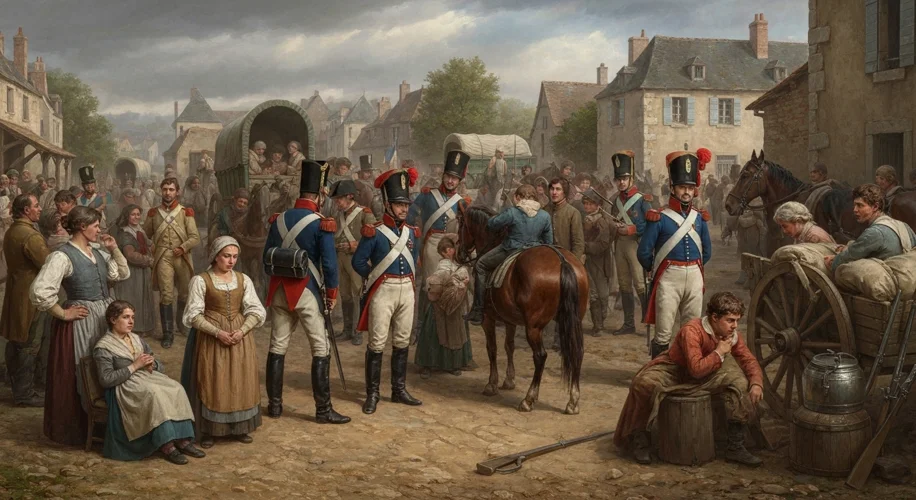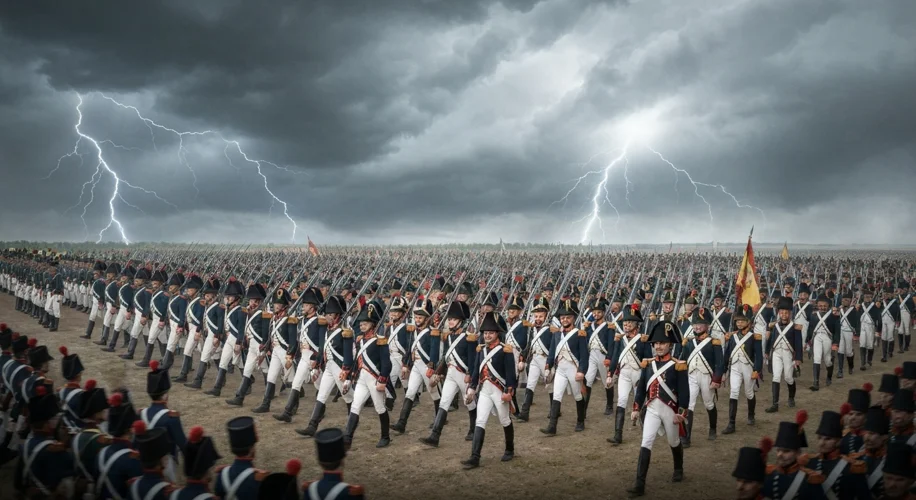The year is 1805. The air crackles with anticipation, not just from the distant cannons of Austerlitz, but from the sheer, unyielding force of France’s Grand Armée. How could one man, Napoleon Bonaparte, sustain such a relentless tempo of warfare, fielding armies that seemed to materialize from thin air, marching across continents and dictating terms to empires? The answer, echoing from the muddy fields of the Vendée to the frosty plains of Russia, lies in a sophisticated, often brutal, but undeniably effective system of manpower that fueled Napoleon’s ambitions.
At the heart of this engine was the conscription – a word that would become synonymous with Napoleon’s reign. The Loi Jourdan-Delbrel of 1798, enacted during the Directory but perfected and ruthlessly enforced under Napoleon, established a national lottery for military service. Every year, young men, typically between the ages of 20 and 25, were subject to the call. But this was no mere lottery; it was a highly organized, hierarchical system. Cities, towns, and even villages were assigned quotas. Refusal meant severe penalties for the individual and their families, including imprisonment and confiscation of property.

This system, however, wasn’t about simply dragging unwilling peasants into the fray. It was a carefully calibrated machine designed to maximize human resources. Exemptions were available, of course. The wealthy could often buy their way out, or provide a substitute, a practice that fueled social tension but ensured that some of the better-educated and more resourceful men remained in civilian life. Yet, the sheer scale of the demand meant that even these loopholes couldn’t stem the tide of conscription. For many, military service was not just a duty, but a pathway to advancement, adventure, or simply escape from rural poverty. The promise of glory, and the relatively decent pay and rations offered by the army, acted as powerful incentives, particularly in the early years of Napoleon’s ascendancy.
The Grand Armée was not solely composed of Frenchmen. Napoleon’s genius lay not only in battlefield tactics but also in his ability to incorporate the peoples of his vast empire into his war machine. The Confederation of the Rhine states, the Kingdom of Italy, the Duchy of Warsaw – all were compelled to contribute troops. These contingents, often serving under their own officers and in their distinctive uniforms, added immense numbers and diversity to the French forces. While these allied troops were crucial, their loyalty could be variable, a factor that often played out disastrously on the battlefield when French fortunes waned.
The logistical and administrative backbone of this manpower system was formidable. The Maison Militaire de l’Empereur, the Emperor’s household troops, provided a core of elite, loyal soldiers. Beyond that, a vast network of depots, training centers, and administrative staff ensured that recruits were processed, equipped, and deployed with remarkable efficiency, especially considering the communication and transportation limitations of the era. The implementation of standardized drills and tactics, driven by Napoleon himself, ensured that these diverse and often raw recruits could be molded into effective fighting units.
The human cost, however, was staggering. The continuous campaigns, from the Iberian Peninsula to the Russian steppes, exacted a terrible toll. Disease, starvation, and the sheer brutality of close-quarters combat often decimated units more effectively than enemy fire. The reliance on conscription meant that a generation of Frenchmen was placed in constant peril. Families were torn apart, villages were left depleted of their young men, and the social fabric of France itself was stretched to its breaking point. Yet, the French populace, for a long time, bore this burden, fueled by national pride, Napoleon’s charisma, and the perceived legitimacy of his cause.
Ultimately, France’s ability to sustain such massive and continuous warfare under Napoleon was a testament to a national mobilization effort that bordered on the total. It was a system built on a foundation of compulsory service, augmented by allied contingents, and managed with an administrative efficiency that was revolutionary for its time. While Napoleon’s military brilliance is often the focus, the enduring manpower of France, forged through conscription and societal adaptation, was the true bedrock upon which his empire was built, and ultimately, upon which its foundations began to crumble when that human cost became too great to bear.

